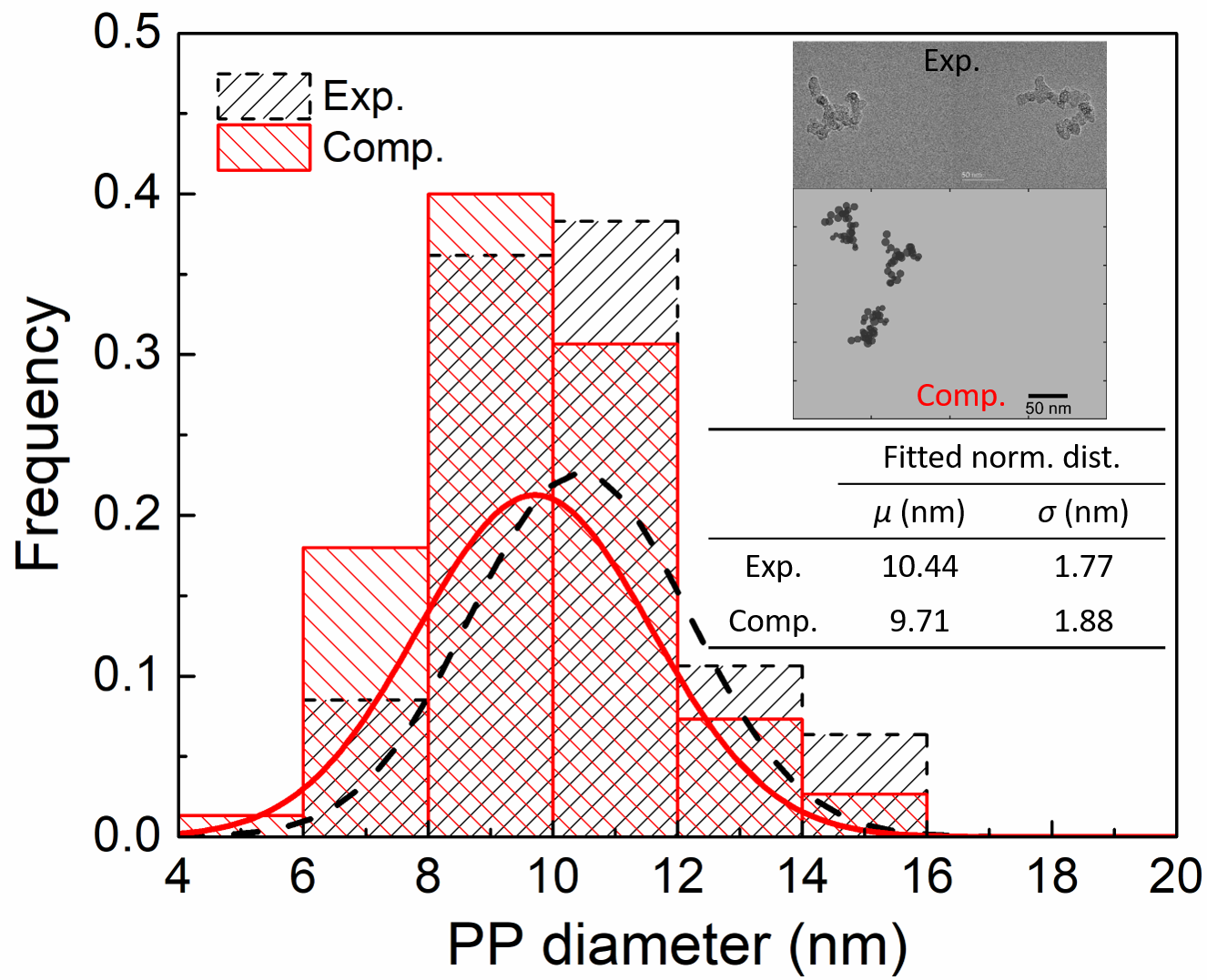Technical Report 233, c4e-Preprint Series, Cambridge
Simulation of soot particle morphology in a premixed ethylene stagnation flame
Reference: Technical Report 233, c4e-Preprint Series, Cambridge, 2019
- Morphology of soot aggregates in a premixed ethylene flame was computed using a detailed model and compared with experimental TEM images directly.
- A thorough parametric sensitivity study was performed to understand the influence of key model parameters on the predicted soot aggregate morphology.
- Time scale analysis for individual sooting processes were conducted to explain the morphological evolution of soot particles.
 Numerical simulation of soot formation in a laminar premixed burner-stabilized ethylene stagnation flame was performed with a detailed population balance model (DPBM) capable of tracking full structural details of aggregates as well as their chemical composition. A thorough parametric sensitivity study was carried out to understand the influence of individual sooting processes on the computed primary particle size distributions (PPSDs).
The rate of production of pyrene, coagulation efficiency, surface growth rate and sintering/coalescence rate were found to have significant effects on the computed PPSDs, while sintering of aggregates only had mild effects. Direct comparison between the computed and observed aggregate morphology was performed both qualitatively and quantitatively. Excellent agreement was obtained, demonstrating the capability of the current DPBM in predicting aggregate morphology and supporting the current mechanisms contributing to the evolution of primary particles (PPs), i.e. nucleation, coagulation, surface growth and sintering/coalescence. The rates of individual sooting processes were examined to determine the dominant particle processes at different periods of time, which helped explain the time evolution of the PP size. Despite of the encouraging agreement between the computed and measured morphology of aggregate particles, we suggest that a more fundamental study of the coalescence process is required.
Numerical simulation of soot formation in a laminar premixed burner-stabilized ethylene stagnation flame was performed with a detailed population balance model (DPBM) capable of tracking full structural details of aggregates as well as their chemical composition. A thorough parametric sensitivity study was carried out to understand the influence of individual sooting processes on the computed primary particle size distributions (PPSDs).
The rate of production of pyrene, coagulation efficiency, surface growth rate and sintering/coalescence rate were found to have significant effects on the computed PPSDs, while sintering of aggregates only had mild effects. Direct comparison between the computed and observed aggregate morphology was performed both qualitatively and quantitatively. Excellent agreement was obtained, demonstrating the capability of the current DPBM in predicting aggregate morphology and supporting the current mechanisms contributing to the evolution of primary particles (PPs), i.e. nucleation, coagulation, surface growth and sintering/coalescence. The rates of individual sooting processes were examined to determine the dominant particle processes at different periods of time, which helped explain the time evolution of the PP size. Despite of the encouraging agreement between the computed and measured morphology of aggregate particles, we suggest that a more fundamental study of the coalescence process is required.
Material from this preprint has been published in Combustion and Flame.
PDF (2.1 MB)



